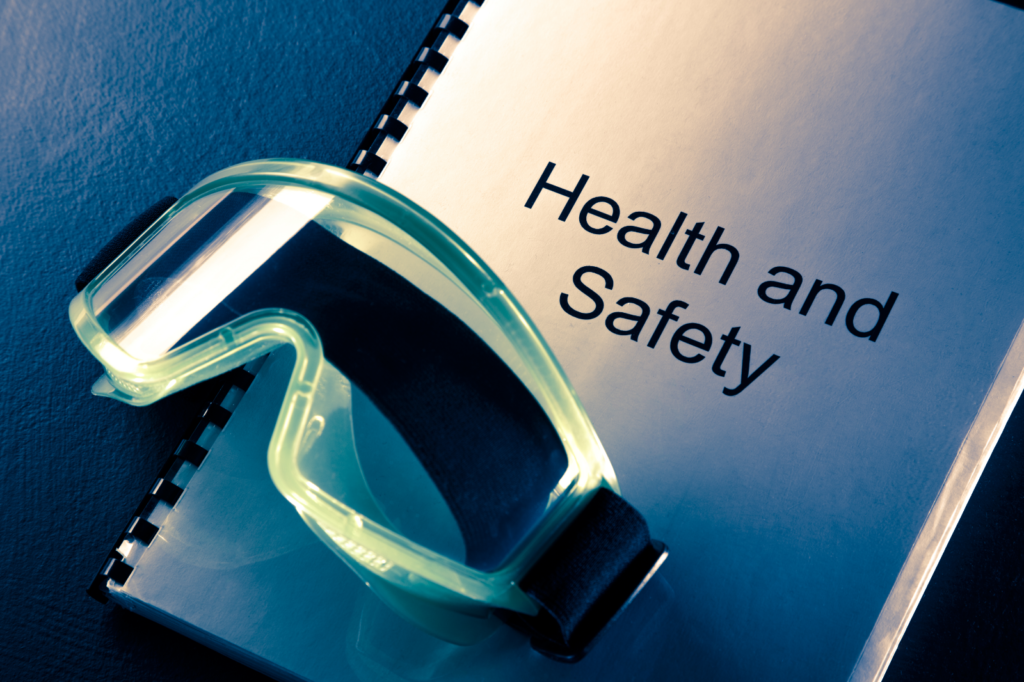- Why Verature?Find out why Verature is the best system for continuous contractor compliance.
- Arrive, Work & Stay Safe
- Removes Paper & Spreadsheets
- Tracks Key Contractors
- Instant 360 Visibility
- Contractor Management Dashboards
- Why Contractor Management Software
- Our Customer Reviews
- Pricing
We don’t hide behind fancy sales teams before we tell you, our prices.- Clients
See who we are working with and what they have to say about Verature.- Resources
Check out our blog, useful guides, whitepapers and product videos.- Prequalification and Induction Guide
- Contractor Compliance Guide
- Mini-Audit your Permit to Work System
- Health and Safety Audit Checklist
- Resource Library
- Blog
Book a demo
The Evolution of Health and Safety Regulations in the UK: 2024 Perspective

Health and safety regulations in the UK play a crucial role in ensuring the protection and well-being of workers and the general public. These regulations are designed to prevent accidents, injuries, and illnesses in workplaces across various sectors. By setting clear standards and guidelines, health and safety laws help maintain a safe working environment, reduce risks, and promote a culture of responsibility among employers and employees alike.
The importance of these regulations extends beyond the workplace, contributing to overall public safety and health. They ensure that businesses operate responsibly and sustainably, with the welfare of their workforce and the community in mind. As such, the UK’s health and safety framework is a vital component of its socio-economic structure, supporting productivity and fostering trust between employers, employees, and the public.
Purpose of the Article
The purpose of this article is to explore the evolution of health and safety regulations in the UK, providing insights into how these laws have developed over time to meet the changing needs of the workforce and society. We will examine key milestones in the regulatory landscape, with a focus on recent updates in 2024, to understand their impact on modern workplaces.
By tracing the historical journey of these regulations, we aim to highlight the progress made and the challenges that remain. This exploration will also shed light on the future direction of health and safety in the UK, particularly in the context of technological advancements and evolving industry standards.
Historical Background
Early Beginnings
The origins of health and safety concerns can be traced back to ancient civilisations, where early builders and craftsmen faced hazardous working conditions. In ancient Egypt and China, for example, construction workers employed rudimentary safety measures while building monumental structures like the pyramids and the Great Wall.
These early efforts at safeguarding workers were often born out of necessity, driven by significant incidents or discoveries. Artisans and architects devised basic protective gear and methods to mitigate dangers, marking the initial steps towards recognising and addressing safety concerns. These foundational practices laid the groundwork for the evolution of safety standards, reflecting humanity’s ongoing quest for safer and more secure working environments.
Industrial Revolution
The Industrial Revolution marked a transformative era for health and safety in the UK. As industries expanded and technological advancements accelerated, the need for standardised safety measures became apparent. The rapid industrialisation brought about new risks, leading to the emergence of safety regulations aimed at protecting workers in factories, mines, and other industrial settings.
One of the earliest legislative milestones was the Factory Act of 1833, which sought to improve conditions for child workers by limiting working hours and mandating inspections. This act laid the foundation for subsequent laws that expanded protections to adult workers, setting a precedent for government intervention in workplace safety.
Over time, the legislative framework evolved to address various hazards, including those related to machinery, chemicals, and occupational diseases. These early regulations set the stage for the comprehensive health and safety standards we see today, underscoring the importance of adapting to new challenges in a rapidly changing industrial landscape.
Key Milestones in Health and Safety Legislation
The Health and Safety at Work Act 1974
The Health and Safety at Work Act 1974 is a cornerstone of health and safety legislation in the UK, marking a significant shift in how workplace safety is regulated. This landmark act established a comprehensive legal framework to protect the health, safety, and welfare of employees across all industries.
One of the most important aspects of this act was the creation of the Health and Safety Executive (HSE), an independent body responsible for enforcing workplace health and safety laws. The HSE plays a critical role in reducing workplace accidents and illnesses through inspections, investigations, and the provision of guidance to employers and employees.
The 1974 Act emphasised the importance of risk assessment and the need for employers to ensure the safety of their workers. It introduced a legal duty of care, requiring employers to provide a safe working environment and adequate training and equipment. This act laid the foundation for modern health and safety practices, highlighting the importance of a proactive approach to risk management and prevention.
The Management of Health and Safety at Work Regulations 1999
Building on the 1974 Act, the Management of Health and Safety at Work Regulations 1999 introduced more specific duties for employers. These regulations require employers to carry out regular risk assessments to identify and control workplace hazards.
The 1999 regulations emphasised the need for a systematic approach to managing health and safety risks, including the development of safety policies and procedures. They also highlighted the importance of worker involvement and consultation in health and safety matters
By establishing a clear framework for risk management, these regulations have significantly improved workplace safety standards across various industries, encouraging a culture of continuous improvement and vigilance.
Control of Substances Hazardous to Health (COSHH) Regulations 2002
The Control of Substances Hazardous to Health (COSHH) Regulations 2002 were introduced to protect workers from the risks associated with hazardous substances. These regulations require employers to assess and manage the risks posed by substances such as chemicals, dust, and fumes.
Under COSHH, employers must implement measures to prevent or control exposure to hazardous substances, including the use of personal protective equipment (PPE) and the provision of adequate ventilation and storage facilities. The regulations also mandate regular monitoring and health surveillance to ensure the effectiveness of control measures.
COSHH has played a crucial role in raising awareness about the potential health risks associated with hazardous substances and ensuring that adequate precautions are taken to minimise harm.

Modern Developments and Reforms
Recent Regulatory Changes
In recent years, health and safety regulations have continued to evolve to address emerging risks and challenges. The 2024 updates include several significant changes aimed at improving compliance and safety outcomes.
These updates focus on enhancing clarity and accessibility of regulations, streamlining reporting processes, and incorporating the latest scientific and technological advancements For example, there have been changes to the RIDDOR (Reporting of Injuries, Diseases and Dangerous Occurrences Regulations) to improve the accuracy and efficiency of incident reporting.
The implications of these changes are far-reaching, requiring businesses to review and update their health and safety policies and procedures to ensure compliance As a result, organisations need to remain vigilant and proactive in adapting to the evolving regulatory landscape
Technological Advancements
The rise of digital tools and platforms is reshaping the way businesses manage health and safety compliance. Technologies such as Verature’s compliance management software are helping organisations streamline their processes and improve safety outcomes
These digital solutions offer features such as real-time monitoring, automated reporting, and data analytics, enabling businesses to identify and mitigate risks more effectively. By leveraging technology, organisations can enhance their ability to comply with regulations and create safer working environments for their employees.
Sector-Specific Legislation
Construction Industry
The construction industry faces unique health and safety challenges, necessitating tailored regulations to address its specific risks. The Construction Design and Management Regulations 2015 are a key component of the UK’s safety framework for construction projects
These regulations emphasise the importance of effective planning, coordination, and communication among all parties involved in a construction project They require clients, designers, and contractors to work together to identify and manage risks throughout the project lifecycle.
The CDM Regulations have significantly improved safety standards in the construction industry, reducing accidents and fostering a culture of collaboration and accountability.
Manufacturing and Other Sectors
In addition to the construction industry, other sectors such as manufacturing and healthcare have specific health and safety regulations tailored to their unique challenges. For example, the Control of Major Accident Hazards (COMAH) Regulations apply to industries that handle large quantities of hazardous substances, requiring them to prevent and mitigate the effects of major accidents .
These sector-specific regulations highlight the importance of addressing industry-specific risks and ensuring that appropriate measures are in place to protect workers and the public.
Impact and Future Trends
Cultural Shift in Safety Practices
Over the years, there has been a significant cultural shift in how businesses approach health and safety. What was once seen as a compliance necessity is now regarded as a strategic business priority.
Organisations increasingly recognise the value of investing in health and safety, not only to comply with regulations but also to enhance employee well-being and productivity. This shift reflects a broader trend towards creating safer, healthier, and more sustainable workplaces.
Predictions for the Future
Looking ahead, several emerging trends and technologies are likely to influence the next phase of health and safety regulations. The integration of artificial intelligence (AI) and machine learning in safety management systems is expected to enhance risk assessment and incident prediction capabilities.
Conclusion
The evolution of health and safety regulations in the UK has been marked by significant milestones, from the foundational Health and Safety at Work Act 1974 to recent updates that address modern challenges . These developments underscore the importance of proactive risk management and the integration of technology in ensuring workplace safety
Discover How Verature Can Transform Your Compliance
Book a demo today to explore how Verature’s platform can support your organisation in staying compliant and enhancing safety. During the demo, we’ll:
- Understand Your Needs: Discuss your business challenges and current processes.
- Personalised Walk-Through: Provide a guided tour of our system.
- Hands-On Experience: Give you access to a live demo system.
To book, simply select a date and time, enter your details, and receive a Zoom invite for your session. If you prefer an alternative platform, contact us at april.waddington@verature.co.uk
Join us to see how Verature can help your organisation meet its health and safety needs without high-pressure sales tactics!
Book a demoFind out if you’re ready with our Verature Onboarding Kit
Not sure if Verature is right for you? We understand it’s not easy to make a decision on a new system, but that’s why we’ve created our Onboarding Kit to make that that process simple.
Check our package details
Find out no matter what package you choose, you’ll be getting the best features you need for you and your team so you can have continuous contractor compliance.
Make it your own
You’ll get to see and choose your customisation options, and check out the available add-ons and extras so the system is exactly what you want and need.
Quickly getting you started.
Keeping this guide with you, and working closely with us, we can walk you through each step so you can be completely up and running with your own Verature system.

More reasons to use Verature
It’s easy to get started.
Step 1
Book a demo of Verature with the team.
Step 2
We’ll chat through your requirements and see if Verature is right for you.
Step 3
We’ll send you demo access and our onboarding kit to help you decide what you need.
Step 4
You decide if we’re right for you. No pushy sales calls.
Step 5
Like what you see and hear? Let’s get you onboarded with Verature!






